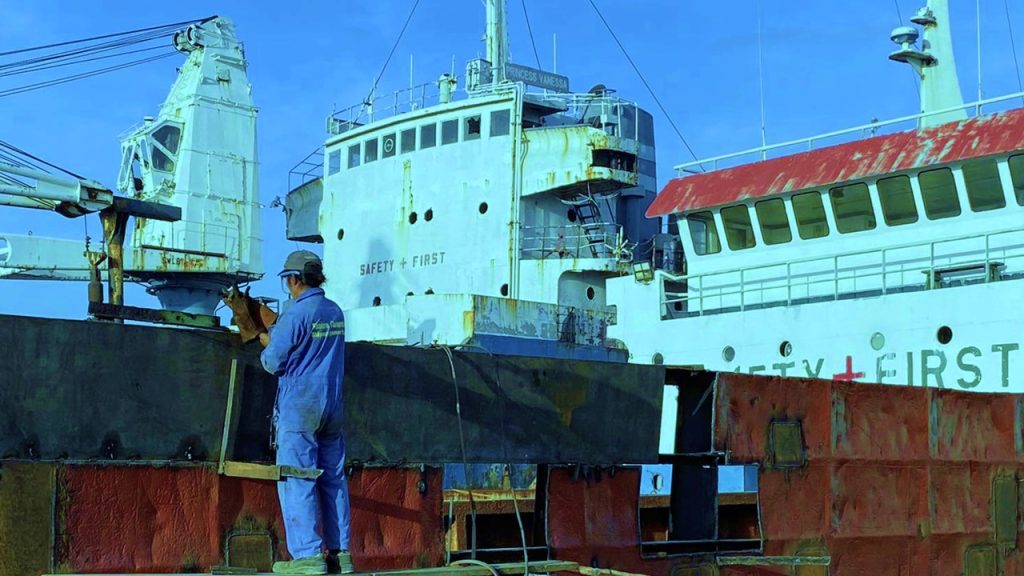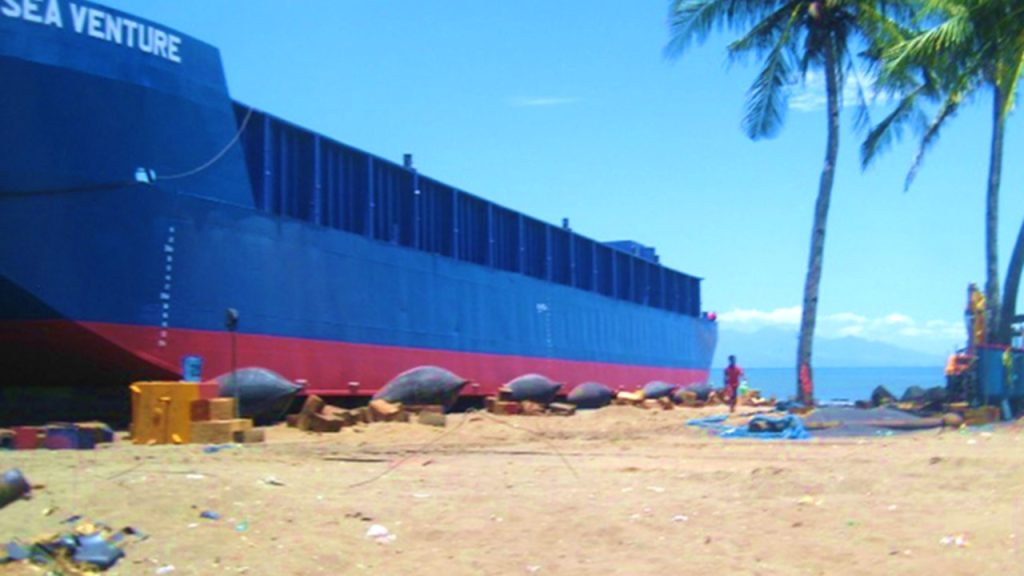When it comes to shipbuilding, Filipino craftsmanship is renowned worldwide for its precision and attention to detail. But what makes their tugboats truly remarkable? From the bustling shipyards of Subic Bay to the coastal town of Cavite and Cebu, Filipino shipbuilders have honed their skills over generations, combining traditional techniques with modern innovation. With a deep understanding of maritime needs and a commitment to quality, they meticulously construct these powerful vessels that navigate through treacherous waters with ease. In this article, we delve into the fascinating world of how Filipino shipbuilders are constructing tugboats, uncovering the secrets behind their exceptional workmanship and unwavering dedication to excellence.
Click here to view our tugboat shipbuilding capabilities.
The History and Significance of Filipino Shipbuilding
Filipino shipbuilding has a rich history that dates back centuries. Since the pre-colonial era, the Philippines has been known for its exceptional craftsmanship in building traditional boats like balangay and vintas. However, it was during the Spanish colonization period that Filipino shipbuilding truly flourished. The Spaniards established shipyards in Cavite province, now known as the birthplace of the Philippine Navy, turning it into a hub for constructing galleons used in trade with Mexico. This skill set was passed down through generations and remained ingrained in Filipino culture.
Fast forward to modern times, Filipino shipbuilders continue to leave their mark on the global maritime industry. The country is renowned for its expertise in constructing tugboats – sturdy vessels designed to assist larger ships with maneuvering and towing tasks. What sets Filipino-built tugboats apart is not only their durability but also their innovation in maximizing space utilization. Despite being smaller than most foreign counterparts, these tugboats possess impressive power and handling capabilities due to meticulous design and engineering techniques embraced by local shipbuilders.
The significance of Filipino shipbuilding goes beyond technical superiority; it represents national pride and economic contribution. Shipbuilding is a critical sector that fosters employment opportunities for countless Filipinos who have honed their skills over generations. Moreover, as an archipelago nation heavily reliant on maritime transportation, having proficient domestic shipbuilders ensures self-reliance when it comes to maintaining a strong fleet of vessels necessary for trade, defense purposes, and disaster response efforts.
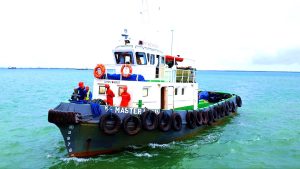
Traditional Techniques Used by Filipino Shipbuilders
Filipino shipbuilders have long utilized traditional techniques in constructing tugboats, showcasing their exceptional craftsmanship and deep-rooted maritime heritage. One notable method involves the use of wooden planks known as “panduwa.” These sturdy planks are skillfully shaped and interlocked, creating a watertight structure that ensures the vessel’s durability amidst rough ocean conditions. The meticulous process of fitting and fastening each panduwa requires expertise passed down through generations, a testament to the artistry embedded within Filipino shipbuilding traditions.
Another intriguing technique employed is the “haligi,” or keel construction. The keel serves as the backbone of a tugboat, providing stability and strength. Skilled craftsmen carefully select timber suitable for this purpose, ensuring its resilience against constant exposure to water. By meticulously shaping and joining multiple pieces of wood using traditional tools like adzes and chisels, these shipbuilders create a solid foundation that can withstand the demanding tasks tugboats often face.
Moreover, Filipino shipbuilders incorporate environmentally-friendly elements into their construction methods by utilizing natural adhesives derived from organic materials such as sap from certain tree species or crushed seashells mixed with resin. This eco-conscious approach not only aligns with sustainable practices but also showcases ingenious solutions that meet modern demands while honoring traditional craftsmanship.
Filipino shipbuilders have long been revered for their craftsmanship and skill in constructing tugboats using traditional techniques. One such technique involves the “ulali” method, where the wooden planks of the hull are carefully bent and shaped to fit in place without the use of modern tools or machinery. This age-old practice requires patience, expertise, and an understanding of the natural curves and bends that can be achieved by steam-bending or soaking the wood in water.
Another fascinating technique used by Filipino shipbuilders is the “pukot” method for joining timber components. Instead of relying on metal fasteners like nails or screws, shipbuilders utilize ropes made from sturdy fibers such as abaca or coconut husk to connect different parts of the boat together. This low-tech approach not only holds the structure firmly but also allows for slight flexing during rough waters, making tugboats built in this manner more resilient against stress and strain.
These traditional techniques may seem antiquated when compared to modern shipbuilding methods with their extensive use of technology and machinery. However, they bring a unique elegance and character to each tugboat crafted through these methods. The skills passed down from generation to generation create vessels that blend seamlessly into their maritime environment while preserving cultural heritage. By harnessing time-tested techniques rather than relying solely on modern advancements, Filipino shipbuilders perpetuate a rich tradition that continues to impress with its simplicity yet effectiveness in creating high-quality tugboats.

Modern Advancements in Constructing Tugboats
The world of tugboat construction has been revolutionized by modern advancements over the years. One significant development is the use of advanced materials, such as high-strength steel alloys and composites, that offer increased durability and improved performance. These materials have allowed for the construction of lighter and more efficient tugboats capable of withstanding harsh weather conditions and heavy workloads.
Another noteworthy advancement is in the integration of cutting-edge technologies into tugboat design. Automation systems incorporating artificial intelligence (AI) have made significant headway in this industry. These AI systems can analyze data from various sensors onboard to optimize vessel performance, fuel consumption, and navigation routes. Additionally, they enable remote monitoring and control capabilities, providing real-time information to ship operators and improving overall safety.
Furthermore, propulsion systems in modern tugboats have seen remarkable improvements. The introduction of hybrid propulsion technology combines diesel engines with electric motors or batteries, reducing fuel consumption while keeping power at peak levels when needed. The integration of azimuth thrusters allows for omni-directional maneuverability and precision control – a game-changer when it comes to docking large vessels or performing complex towing operations.
As we continue to see advancements in constructing tugboats in the Philippines, these innovations not only improve efficiency but also reduce environmental impact through reduced emissions.

Step-By-Step Process of Constructing Tugboats
Here are the typical step-by-step process of constructing tugboats in Tanza, Cavite, Philippines:
Step 1: Design and Planning
The first step in constructing a tugboat is the design and planning phase. Shipbuilders in the Philippines carefully analyze the requirements, specifications, and intended use of the tugboat to create an efficient and functional design. This includes determining the size, shape, and layout of the vessel, as well as selecting suitable materials for construction. With advanced computer-aided design (CAD) software, shipbuilders can create detailed three-dimensional models that provide a comprehensive visual representation of the final product.
Step 2: Material Acquisition
Once the design is finalized, shipbuilders procure all necessary materials for construction. They carefully select high-quality marine-grade steel plates for constructing hulls that can withstand rough seas and challenging maritime conditions. The metal sheets are cut into desired shapes using state-of-the-art cutting machines to ensure precision and accuracy.
Step 3: Assembly and Welding
After acquiring materials, shipbuilders start assembly by joining steel plates together through welding techniques such as electric arc welding or gas metal arc welding. Skilled Filipin welders meticulously weld every joint with precision to ensure the strength and integrity of the vessel’s structure. A robust framework is established based on industry standards to support all components of the tugboat effectively.
Step 4: Installation of Equipment and Systems
Once the framework is in place, shipbuilders proceed with installing various equipment and systems necessary for the tugboat’s operation. This includes but is not limited to engines, propulsion systems, electrical wiring, navigation equipment, communication systems, plumbing fixtures, and safety mechanisms.
High-performance engines are carefully chosen based on the specific requirements of the tugboat. These engines provide the necessary power to propel the vessel through water efficiently.
Step 5: Testing and Commissioning
After all the equipment and systems have been installed, the next step is to test and commission them. This involves conducting a series of rigorous tests to ensure that each component is functioning properly and meeting safety standards.
The engines are tested for their performance, fuel efficiency, and emissions. The propulsion system is checked for its effectiveness in maneuvering the tugboat in different water conditions. The electrical wiring undergoes thorough inspections to ensure proper connectivity and functionality.
Step 6: Finalizing and Handover
Once the testing and commissioning phase is complete, the final step is to finalize all paperwork and hand over the tugboat to its owner. This includes preparing all necessary documentation, such as certificates of compliance, warranties, and maintenance records. Any remaining adjustments or modifications are made based on the test results. The owner may also request additional customization or upgrades at this stage.
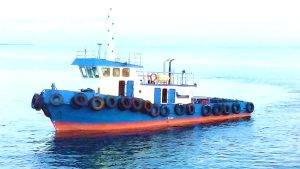
Collaboration with Local Shipbuilders in Constructing Tugboats
Collaboration with local shipbuilders is crucial for innovation in constructing tugboats, and one such collaboration that stands out is with Amaya Dockyard Inc., a prominent name in the Filipino shipbuilding industry. What sets Amaya Dockyard apart is its commitment to integrating traditional craftsmanship with modern technology, resulting in the construction of state-of-the-art tugboats.
Amaya Dockyard’s collaboration with other industry players has not only revitalized the Filipino shipbuilding sector but has also become a hub for technological advancements in tugboat construction. By partnering with international experts and incorporating their expertise into their processes, Amaya Dockyard has successfully brought innovation to every aspect of tugboat construction, from design to execution.
The collaborative efforts have not only resulted in the creation of efficient and environmentally friendly vessels but have also increased productivity significantly. This has paved the way for further growth and expansion of both Amaya Dockyard and the entire Filipino shipbuilding industry. With ongoing collaborations, it seems certain that local shipbuilders like Amaya Dockyard will continue to push boundaries and set new standards for innovation in constructing tugboats.
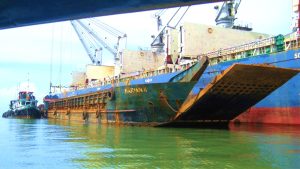
Challenges Faced by Filipino Shipbuilders Who Are Constructing Tugboats and How They Overcome Them
Constructing tugboats in the Philippines presents unique challenges for shipbuilders. One major challenge is the shortage of skilled labor in the industry. Tugboat construction requires specialized skills and knowledge, which are not widely available. Shipbuilders have had to invest time and resources in training their workforce to ensure they have the necessary expertise.
Another significant challenge is sourcing high-quality materials at reasonable prices. The cost of steel, paint, engines, and other components required for tugboat construction can be expensive. Shipbuilders have faced rising costs and difficulty finding suppliers who can provide reliable materials without overcharging. To overcome this challenge, some shipbuilders have formed partnerships with overseas suppliers or adopted alternative techniques that reduce material requirements without compromising on quality.
Despite these challenges, Filipino shipbuilders continue to thrive by embracing innovation and adopting new technologies. They have been quick to adopt advanced manufacturing methods such as 3D printing and modular construction techniques that streamline production processes. Additionally, collaboration between different shipyards has allowed for shared resources and knowledge transfer, further enhancing efficiency in constructing tugboats.
In conclusion, Filipino shipbuilders face obstacles such as a scarcity of skilled labor and high material costs when constructing tugboats. However, through dedication and innovation, they have managed to overcome these challenges by investing in training their workforce, seeking partnerships with international suppliers for affordable materials,and embracing technological advancements that improve efficiency during construction stages.
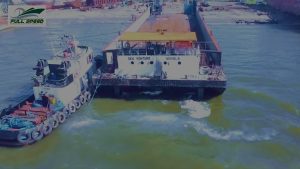
Success Stories of Constructing Tugboats by Filipino Shipbuilders
Filipino shipbuilders have acquired a reputation for excellence in constructing tugboats in Manila, and their success stories truly demonstrate their exceptional skills and craftsmanship. These sturdy vessels play a crucial role in port operations, providing assistance to larger ships in maneuvering through tight spaces or adverse weather conditions. With their expertise and dedication to quality, Filipino shipbuilders have not only transformed the local maritime industry but have also showcased their prowess on the global stage.
One notable success story originates from one of the leading shipbuilding companies in the Philippines that specialize in tugboat construction. Their commitment to innovation and continuous improvement has propelled them toward greater heights within the industry. The company has secured contracts from international clients, delivering custom-built tugboats tailored to specific operational requirements. This remarkable achievement not only signifies the high level of trust placed in Filipino shipbuilders but also highlights their ability to meet international standards of excellence.
Furthermore, another inspiring success story comes from a shipbuilding company in Cavite that started small but eventually gained recognition for its exceptional craftsmanship. Armed with passion and determination, he pursued his dream of constructing tugboats despite limited resources. Through perseverance and hard work, he gradually expanded his business by constantly prioritizing customer satisfaction and delivering exceptional vessels that exceeded expectations. Today, his name is synonymous with quality within the local maritime community, serving as an inspiration for aspiring shipbuilders across the country.
The success stories of constructing tugboats by Filipino shipbuilders serve as a testament to their skillful artistry and unwavering commitment to producing top-notch vessels.

Are you Looking for a Shipbuilding Company to Constructing Tugboats in the Philippines?
Amaya Dockyard & Marine Services Inc. (ADMSI) is a trusted shipbuilding company in the Philippines that specializes in constructing tugboats. With their commitment to quality and cost-effectiveness, they have earned a stellar reputation in the industry. One of the key advantages of choosing ADMSI for your tugboat construction needs is our extensive experience in building vessels specifically tailored for towing and pushing operations.
- Email us: info@amayadockyard.com
- Call our 24-hour hotline: +63 917 633 0479
- Viber: +63 917 633 0479
- WhatsApp: +63 917 633 0479
- Facebook Messenger: Click here
- Click here to inquire
What sets ADMSI apart from other shipbuilders in the Philippines is our dedication to innovation. We fully understand the unique requirements of tugboats and work closely with clients to provide custom solutions that meet their specific needs. From incorporating advanced propulsion systems to enhancing maneuverability, ADMSI always strives to deliver cutting-edge technologies that give our newly built tugboats a competitive edge.
Furthermore, at ADMSI, efficiency is a top priority. Our team of highly skilled Filipino engineers and technicians ensures that every step of the vessel construction process is meticulously planned and executed. This helps minimize delays and increase productivity, resulting in faster turnaround times without compromising on quality.
For those searching for the best shipbuilding company in the Philippines that can construct reliable and high-performing tugboats, look no further than Amaya Dockyard & Marine Services Inc.
The Future of Shipbuilders in Constructing Tugboats in the Philippines
In recent years, the Philippines has emerged as a key player in the global maritime industry, particularly in shipbuilding. While the country is known for its proficiency in constructing large commercial vessels, such as bulk carriers and oil tankers, there is a growing focus on a smaller yet equally essential type of vessel: tugboats. Tugboats, also known as tugs, towboats, or pushboats, play a crucial role in facilitating maritime operations by assisting larger ships with towing, maneuvering in confined spaces, and providing emergency services. With demand for tugboat services projected to increase worldwide, Filipino shipbuilders are seizing this opportunity to showcase their expertise and leverage their competitive advantage.
Abundant Skilled Filipino Laborers
One significant advantage that sets Filipino shipbuilders apart from their international counterparts is the abundant supply of skilled labor. The Philippines boasts a robust pool of experienced craftsmen who have honed their skills over decades through hands-on experience and a deep-rooted passion for shipbuilding. This vast talent pool enables shipyards to produce high-quality tugboats at competitive prices without compromising on safety standards or technical excellence.
Flexibility in Constructing Tugboats
An additional advantage that propels Filipino shipbuilders forward is their adaptability to changing market dynamics. As the maritime industry undergoes rapid technological advancements and stringent environmental regulations are enforced globally, Filipino shipyards are quick to incorporate innovative solutions into their tugboat designs. Whether it’s implementing fuel-efficient engines or utilizing state-of-the-art navigation systems, they consistently strive to align with global trends while delivering value-added options tailored to customer requirements.
Technologies in Constructing Tugboats
As technology continues to advance rapidly, the future of shipbuilders in constructing tugboats in Cavite, Manila, Navotas, Batangas, Subic Bay, and Davao is poised for exciting possibilities. With a strong maritime industry and a skilled workforce, shipbuilders are well-positioned to embrace innovative techniques and adapt to changing market demands. One key area that holds immense potential is the development of environmentally friendly and fuel-efficient tugboats. As global concerns about climate change escalate, there is an increasing need for sustainable solutions in the shipping industry. Shipbuilders in the Philippines can leverage their expertise to not only construct powerful tugboats but also integrate eco-friendly features such as hybrid propulsion systems and emission-reducing technologies.
Automation in Constructing Tugboats
Moreover, automation and digitalization are likely to play a pivotal role in shaping the future of shipbuilding in the Philippines. By incorporating advanced technology and artificial intelligence into the construction process, shipbuilders can enhance efficiency while reducing costs and timeframes. For instance, 3D printing could revolutionize how certain components of a tugboat are produced, allowing for precise customization without compromising structural integrity. Furthermore, by leveraging data analytics algorithms, shipbuilders can optimize maintenance schedules and predict vessel performance accurately.
As the demand for reliable and sustainable maritime transportation grows globally, Pinoy shipbuilders have an excellent opportunity to lead in constructing state-of-the-art tugboats in the Philippines that meet these requirements. By embracing innovation through eco-friendly designs and technological advancements like automation and digitalization, they can establish themselves as frontrunners in the industry.
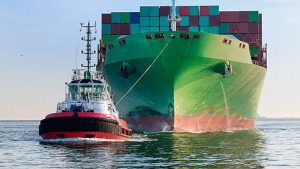
Summary: How Filipino Shipbuilders are Constructing Tugboats
In conclusion, Filipino shipbuilders have proven their expertise in constructing tugboats, showcasing their capabilities on both a domestic and international scale. Through years of experience and continuous innovation, they have gained recognition for their high-quality workmanship and reliable vessels.
One key aspect that sets Filipino shipbuilders apart is their cost-effective production methods. They are able to deliver top-notch tugboats at competitive prices, giving them an advantage in the global market. This has led to an increase in demand from various countries, further solidifying the reputation of Filipino shipbuilders as trusted partners in the maritime industry.
Furthermore, these shipbuilders prioritize sustainability in their construction processes. They utilize advanced technology and eco-friendly materials to reduce carbon emissions while maintaining the durability and efficiency of the tugboats. This commitment to environmental responsibility not only aligns with global standards but also positions them as leaders in environmentally conscious shipbuilding practices.
Overall, Filipino shipbuilders have mastered the art of constructing tugboats through their skilled craftsmanship, cost-effectiveness, and dedication to sustainability. Their success story serves as an inspiration for other nations looking to enhance their own shipbuilding industries. As the demand for efficient and sustainable transportation continues to grow worldwide, it is clear that Filipino shipbuilders will play a crucial role in shaping the future of maritime transportation.

